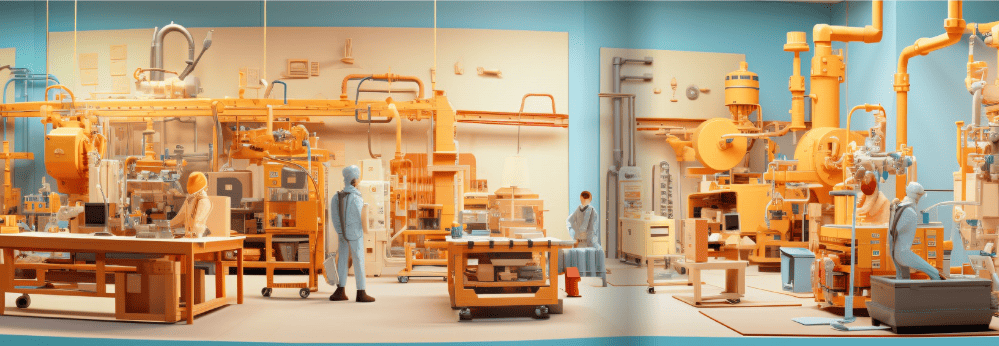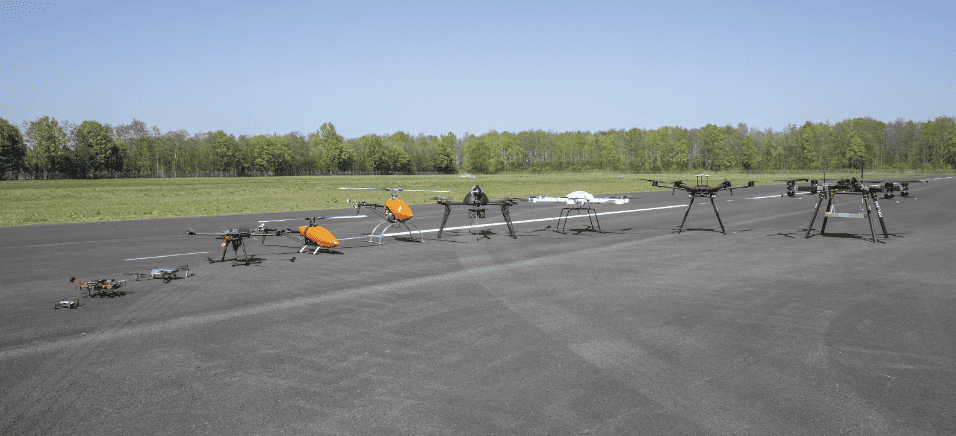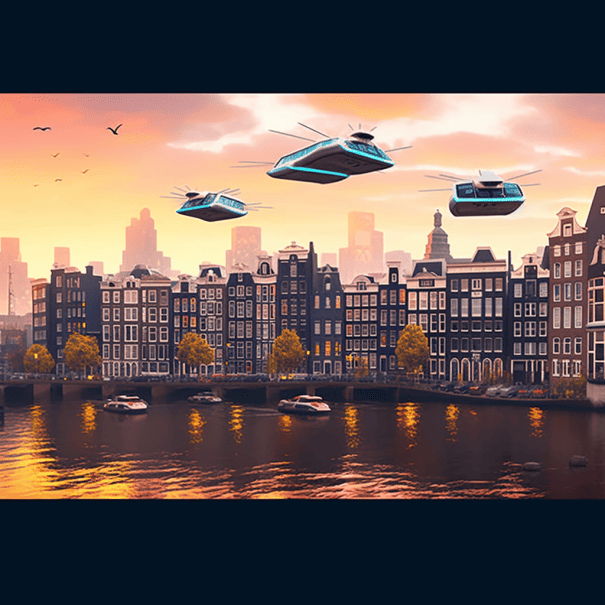
Drivers tapping their fingers impatiently on the steering wheel as traffic is jammed. One thing is certain, the current urban traffic in many big cities leaves much to be desired. So the question arises: why not look to the sky for solutions? In this column, we step into a world where we say goodbye to driving. A world where air travel is the future, and where the unfashionable, grey patches of asphalt give way to nature.
Monday morning, 06:30. I slam the car door and start the engine. I’m in a terrible hurry. Why am I always late? I have a long drive ahead of me from Groningen to Hilversum. It is my first internship day at a major news medium. There is absolutely no room for delay today. So I try to drive fast, although I don’t make any progress. The motorway is teeming with cars.
Halfway through my journey, I become very tired. I struggle to focus properly on the road. I reach for my coffee mug, pay no attention for one second, and suddenly see that the red car in front of me is very close. This is going wrong. Brake! Just in time I bring my car to a stop. My hands are shaking. This could have ended very differently.
As if this stressful experience wasn’t enough, I then have to spend another 45 minutes in a traffic jam. At this rate, I am definitely going to be late and I am balking like hell. Driving is terribly unsafe and inefficient. That’s what I’m thinking about as I slowly move forward. I fantasise about a world where daily traffic jams are a thing of the past. Flying cars, that would be ideal. What if our mobility had already taken some big leaps forward? What if flying became as common as driving? I’ll take you into my dream world. We fly over Amsterdam.
A breathtaking view
Urban planning is undergoing an exciting transformation as flying cars emerge. Those walking through Amsterdam in the future will never have to be bored. There is plenty to see; high above the ground, flying vehicles navigate streamlined through the air. Air taxis, heavy cargo traffic and drones constantly intersect.

In this city, no one owns their own vehicle anymore. People have no appetite for hassles around parking, maintenance or insurance. At the top of every flat, air taxis wait for passengers. With an app on your smartphone, you summon one. As it takes off smoothly, breathtaking views of the city’s green-covered rooftops and shimmering buildings unfold.
Air travel has many advantages. For instance, the number of traffic accidents in this world has been reduced by a whopping 98%, as vehicles are autonomously controlled and communicate with each other to avoid collisions. Travel time for the average Amsterdammer has been cut by 30 minutes. Bye bye time wasting, hello new Netflix series!
Bicycle culture
Of course, even in the future, cycling is still deeply rooted in our culture. In the new Amsterdam, air bikes, a highly upgraded version of our two-wheelers, are the latest craze. Everyone has a flying bike in their shed, which looks like a kind of cross between a traditional bicycle and a drone. Flying cyclists pedal through the air with ease; after all, they no longer have to pedal uphill. Worldwide, Amsterdam is no longer known only for its iconic canals, weed and the famous Red Light District. Its high-tech two-wheelers also adorn postcards.
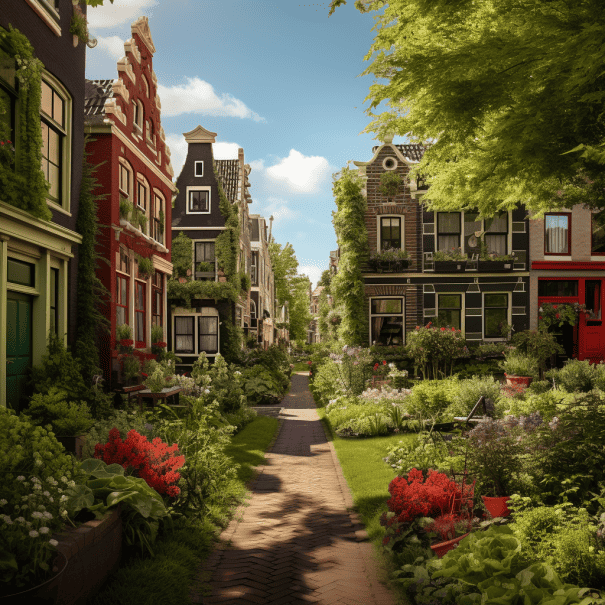
The city can breathe again
The city’s ground floor also looks completely different. The former roads have been transformed into green boulevards. Bushes, sunflowers, tulips and other plants cover the ground as far as the eye can see. The city can finally breathe again. The abundant greenery has not only aesthetic value. The air quality improves significantly and the city becomes cooler, which is especially welcome during the summer months.
Classics won’t be lost
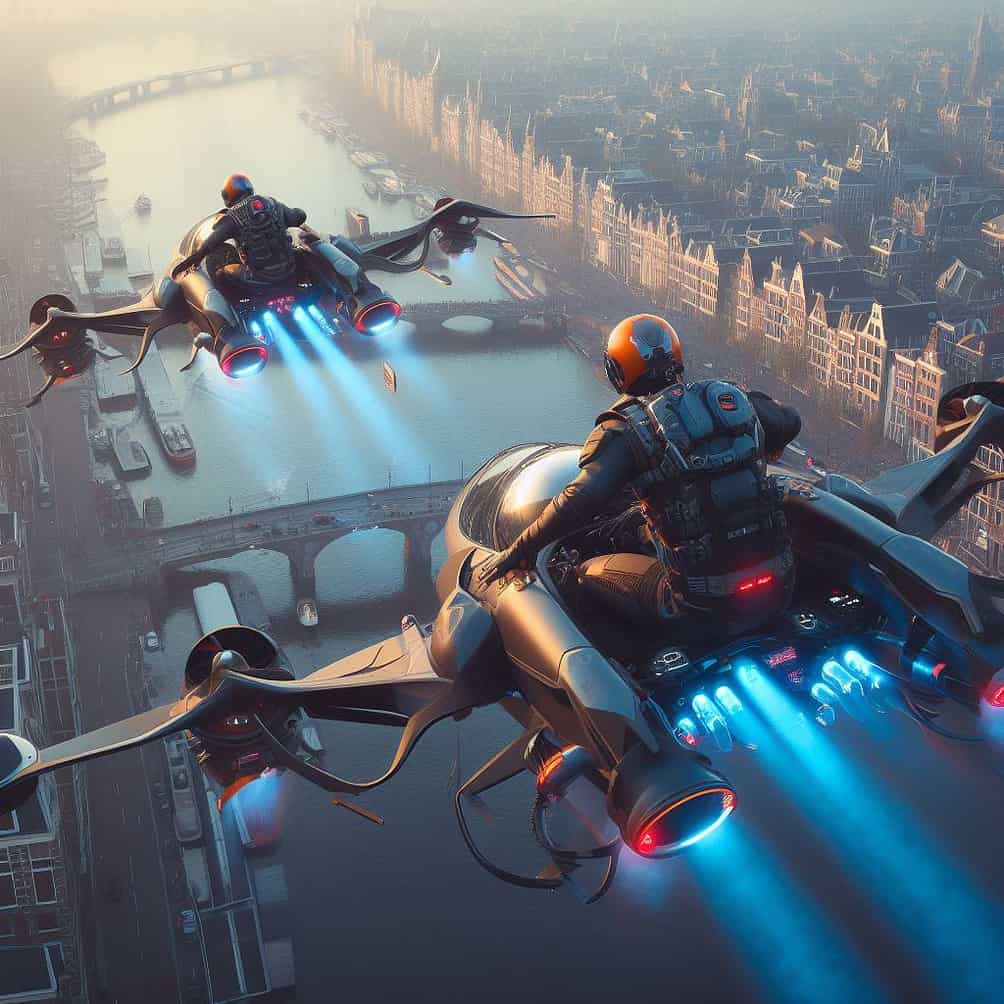
Cities may be undergoing a remarkable transformation, but have no fear: there is definitely still room for classics. These never lose their luster. For instance, what will happen to our old trusty drive-thru’s? I hear you thinking. Simple; those will be transformed into ‘fly-thru’s,’ where you can float through in your flying car. The Big Mac remains unchanged delicious.
Another classic that certainly remains (but which not everyone will be happy about) is the desire to shine in street races like in the old movies. Drivers still compete, but in the air. No longer in the classic Mercedes and Porsches, but in striking flying cars that not only excel in speed, but also excel for their extravagant designs.
‘When I was young…’
Amsterdam 2.0, where we enjoy the view of characteristic buildings from the air, that doesn’t sound wrong to me. And a world without traffic jams seems altogether too good to be true.
Who knows, maybe the concept of traffic jams will soon appear in the “When I was young…” stories grandmothers tell their grandchildren. You know, stories about how people used to queue for hours to withdraw their money from the bank, instead of just making a digital payment with the blink of an eye. Or those long queues at phone booths, where these days we all carry a mini-computer in our pockets. Or, as grandma could so eloquently tell us, how we had to drive step-by-step down the motorway to work in our rickety bakkies. So old-fashioned!


